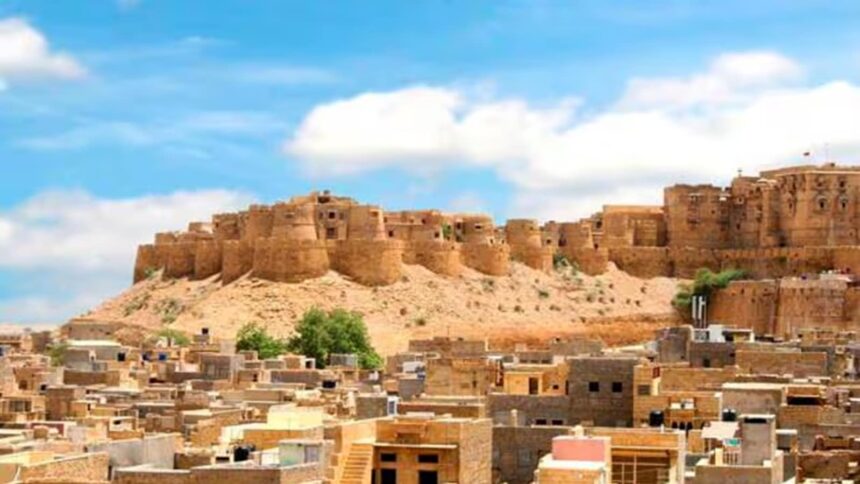A blistering heatwave swept across western India on Thursday, with Jaisalmer in Rajasthan recording a scorching 48.0°C (118.4°F) — the highest maximum temperature in the country for the day, according to the India Meteorological Department (IMD). The temperature in Jaisalmer was 5.5°C above normal.
Across Rajasthan, other cities also reeled under oppressive heat. Barmer followed closely behind with a maximum temperature of 47.5°C, which was 5.2°C above the seasonal average, while Bikaner sizzled at 46.4°C, exceeding the norm by 4.0°C. Phalodi recorded 46.2°C (+3.4°C departure), and Pilani reached 45.7°C, nearly 5°C above normal.
Churu reported 45.6°C with a departure of 2.9°C, and Jodhpur wasn’t far behind at 44.5°C, up 3.3°C from average. Sriganganagar registered 44.1°C (+1.6°C), while Jaipur and Ajmer saw highs of 43.2°C and 43.1°C, respectively.
Earlier in the day at 2:30 p.m., Jaisalmer had already reached 47.4°C, according to IMD’s real-time bulletin. persisted in isolated pockets of Rajasthan, with “warm night” conditions reported in several areas—an added health risk due to minimal nocturnal relief.
The IMD issued a yellow alert for Rajasthan, indicating moderate health risks to the general public and greater concern for vulnerable groups like infants, the elderly, and individuals with chronic conditions. The advisory urged people to avoid heat exposure, wear lightweight cotton clothing, cover their heads, and remain well-hydrated.
Recorded Maximum Temperature at 1730 Hrs IST of 23rd May 2025
— India Meteorological Department (@Indiametdept)
An orange alert was also issued for regions likely to see higher health risks from heat exposure, advising the use of ORS solutions and homemade drinks like lemon water and buttermilk to prevent dehydration. The guidance remains in effect through the week, with heatwave conditions expected to continue over Rajasthan and adjoining areas until at least Day 5 of the forecast cycle.
Meteorologists attribute this wave to a persistent high-pressure system combined with a delay in pre-monsoon activity, conditions that are becoming increasingly common in India due to climate change. The IMD predicts temperatures across Northwest India could rise further by 2–4°C over the next two days.
The department is actively disseminating safety guidelines via social media (@indiametdept) and through a QR code linking to its Heatwave Guidance Portal, providing district-wise warnings and health advisories.
As the region braces for even higher temperatures in the coming days, public health officials and local authorities remain on alert.








